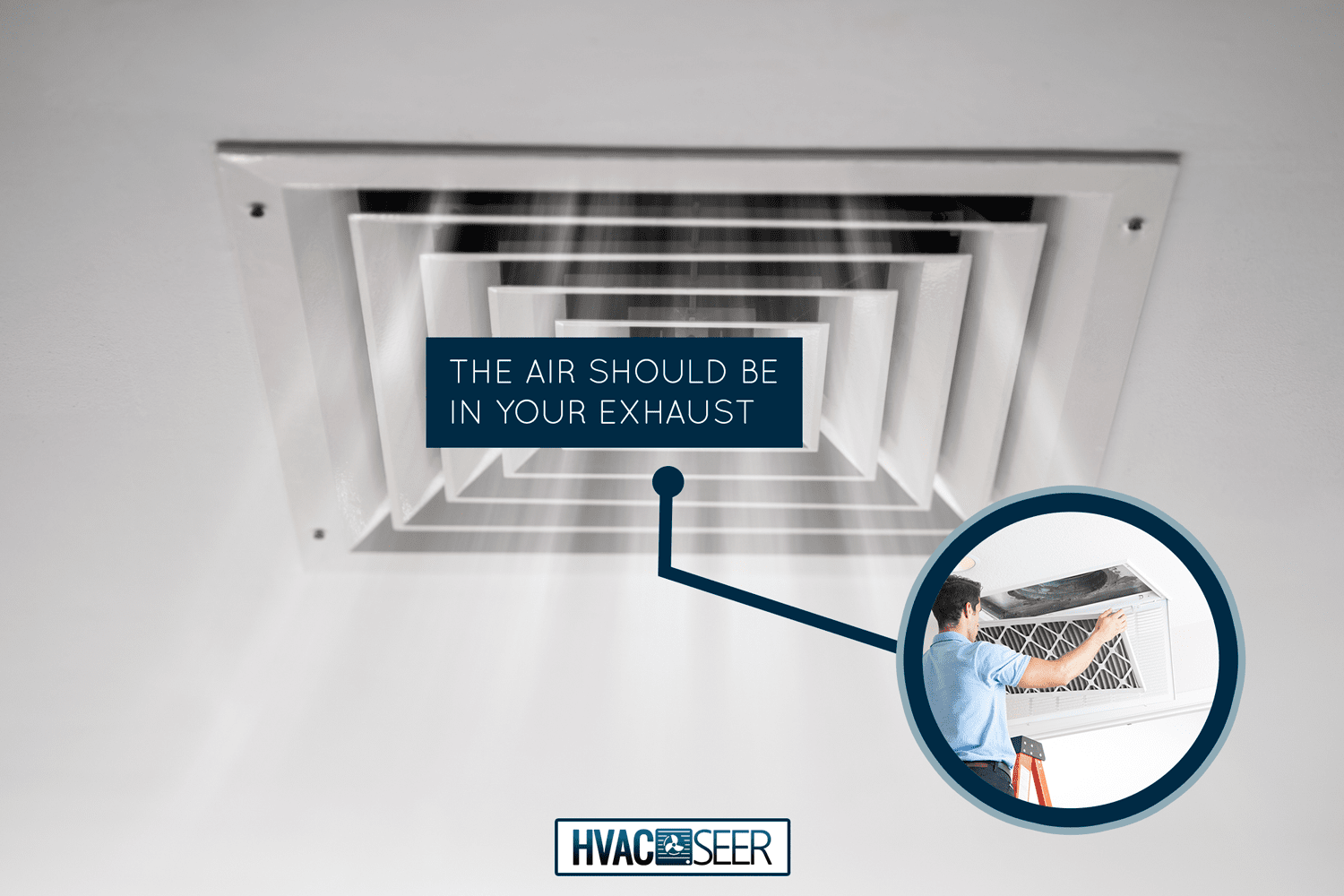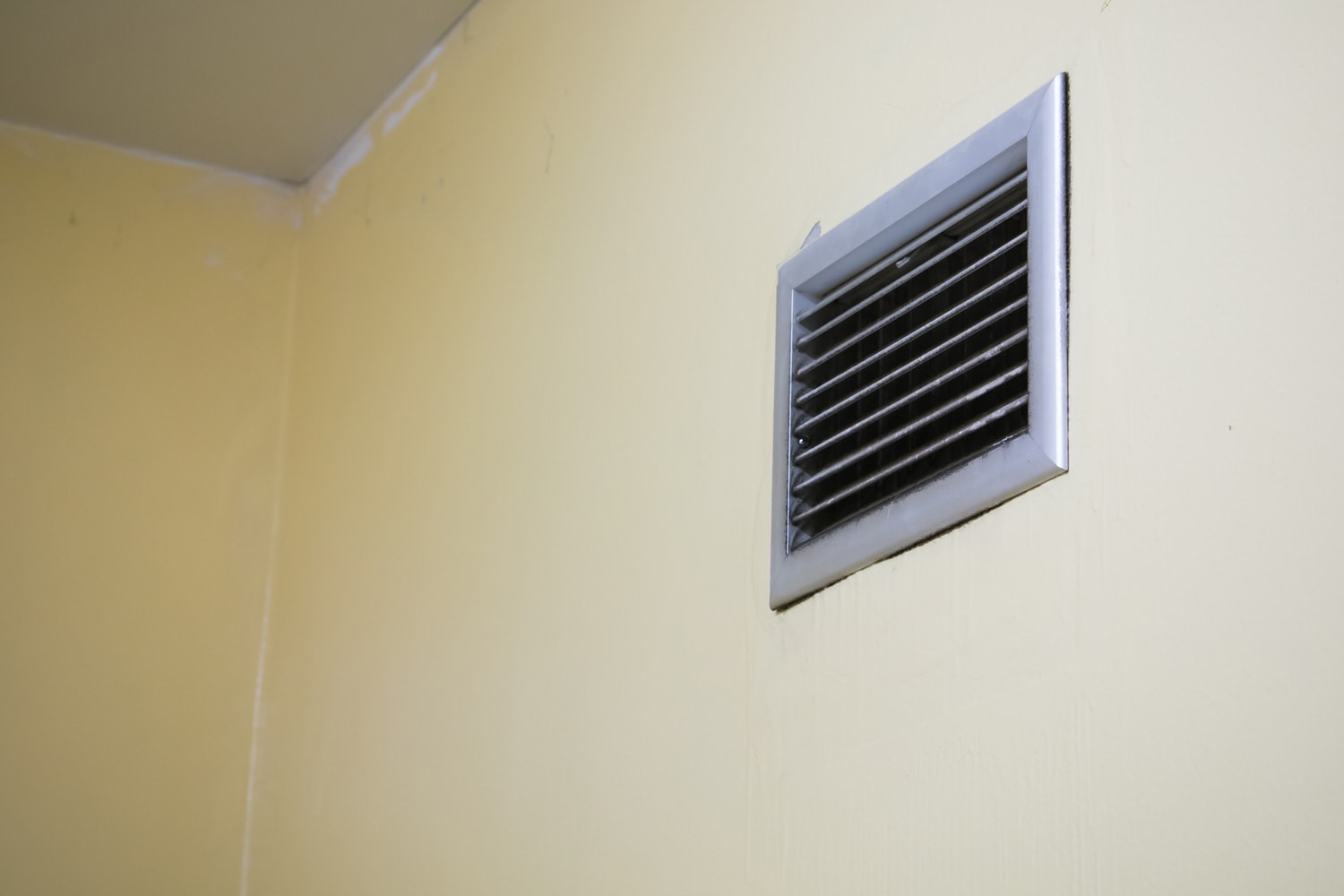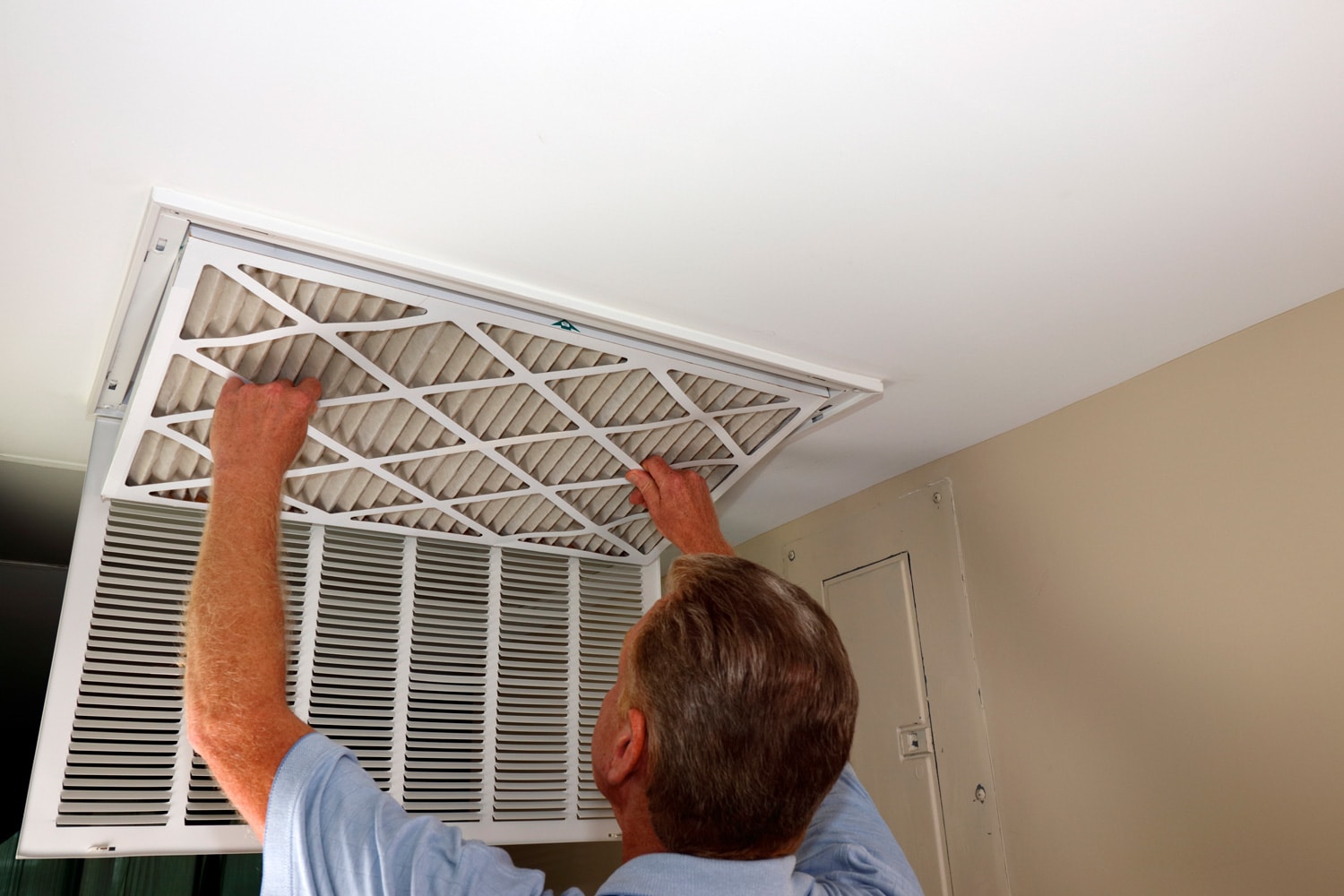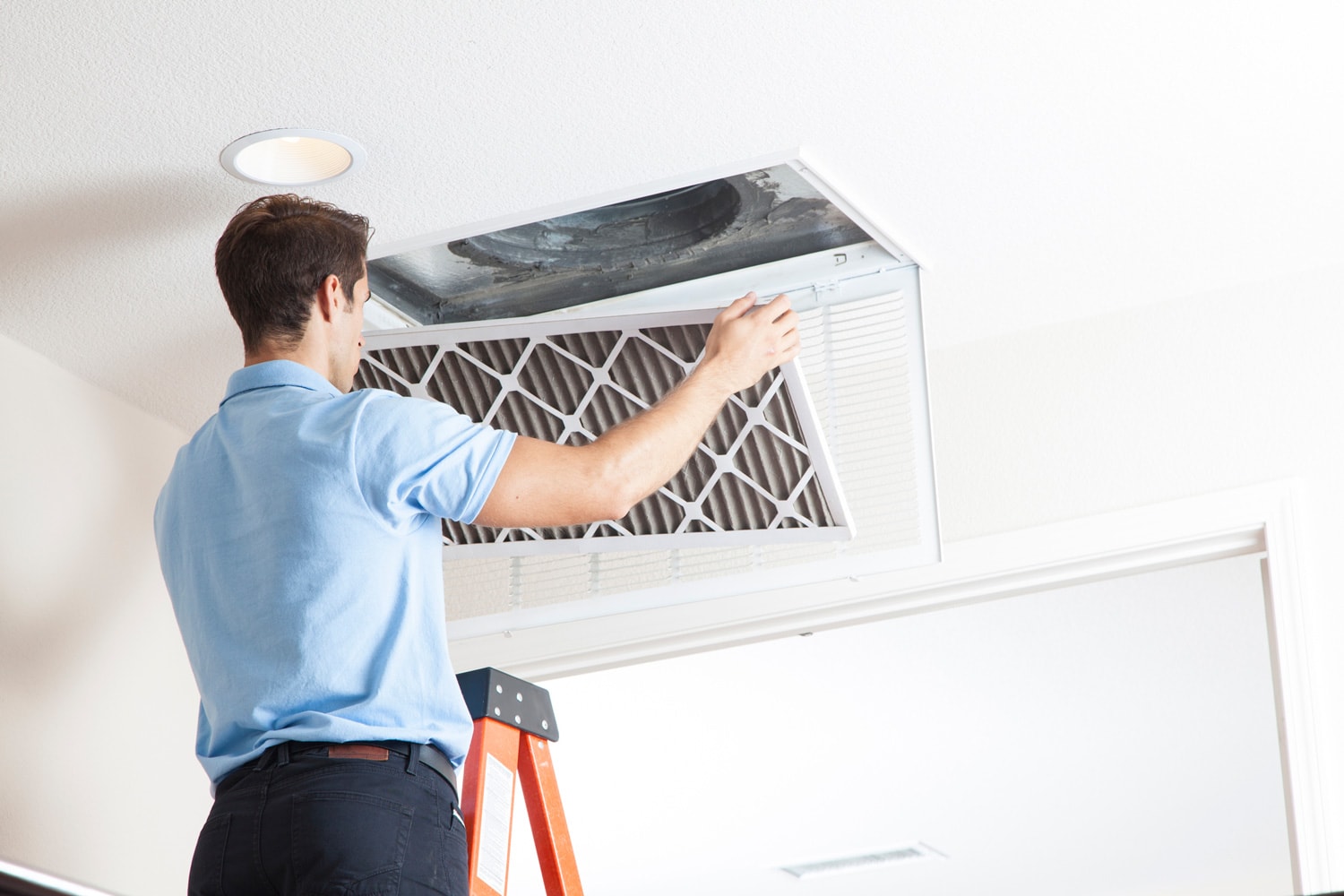Return vents are essential for the HVAC system to effectively operates. This may sound like a complex system, but return vents work to maintain proper airflow and thermal level of your home.
After all, some homeowners often ask should air be coming out in the return vents. Well, wonder no more! We research this topic, and here's what we've found.
In general, your return vents aim to suck the air inside your house and send it back to your HVAC system.
The air should be in your exhaust, not the return vents.
Additionally, return vents allow the HVAC system to keep serving your home with sufficient and efficient airflow.
This article will discuss whether an air vent is needed in your home. We will also walk you through the other top questions about this article. So keep on reading! With that said, Let's dive right in.

Is Having An Air Return Vent Important?
The return air vent for your air conditioner is vital to the HVAC system and has various functions. Return air vents regulate the air pressure in your home and remove air pollutants.
However, these vents can also help you save money on energy costs. Thus, your HVAC system can't work effectively without the air return vents.
How Many Air Return Vents Do You Need?
The square footage of your house will determine how many air return vents you need. It is crucial to figure out the size of your home before installing air return vents.
A return vent is adequate for a small home, around 100 square feet. However, you should not overemphasize your home's air vent requirements.
If your house is more than 100 square feet, you should have at least two air return vents.
Furthermore, HVAC experts advise that you have at least one air return vent in each room of your house for efficient air pressure.

What Happens If There's Not Enough Air Return Vents?
Enough return air is crucial for your HVAC system to function correctly. Otherwise, this will result in your evaporator coil stressing out and more likely to freeze up.
This problem also arises when you restrict the heat circulation in the evaporator system. Your HVAC system won't adequately heat or cool your home if there isn't enough air return available.
It should also be the proper size to deliver enough exhaust air back to your HVAC unit.
What Size Should A Return Vent Be?
An air vent system also cleanses the air before going to the furnace unit; it removes dust and other particles. Usually, a house has the same number of supply vents in each room.
Generally, there are fewer air return vents in your house, but they are significantly larger in radios. A typical supply vent measures four by 10 to 12 inches, while a standard air return vent is around 16 by 20 inches.
Homes frequently have two or more return collection points, each with a filter, which connects before returning to the heating unit. In particular, two-story homes will have an air return downstairs and an extra return upstairs.
What's The Difference Between Supply Vents And Return Vents?
You are certainly aware that a system of ducts is concealed behind the walls in your house, but do you know what they are for?
The supply vents are essential components of your air duct system as return vents. You cannot obtain your desire for proper airflow in your home without these two air vents.
Supply Vents
These air vents push warm air out of your HVAC system. They are simple to spot because that's where the cool air comes from.
The air leaving these vents has passed through the supply vents and the ductwork. The best place to install these vents is in the ceiling or on your house walls.
Return Vents
These vents draw air from the various rooms into your house's HVAC system. You won't feel the air flowing out of them; they are often bigger than supply vents.
Return vents are typically located closer to the floorboard underneath your walls in your house, depending on where your ductwork is located.

Can An Air Return Be Too Big?
You cannot have air return vents that are too big unless there are extreme cases, just like when a closed chamber is briefly experiencing negative air pressure.
Any HVAC system needs return vents to regulate air pressure, remove debris, and operate effectively.
No matter how many or how large the air returns are, the system transfers a certain amount of air to keep the pressure constant.
Does An Air Return Vent Need A Filter?

In general, an air filter should always be present in each air vent in your home. The filters will safeguard the HVAC unit against airborne contaminants like dust, hair, pet dander, and pollen.
Installing a filter in your air vents will give your home the best air quality circulation. The majority of HVAC experts advise cleaning your air filter within 90 days.
If you have a pet in your home, it's ideal for replacing your filter once every 60 days.
See these air return vent filters on Amazon.
Should I Cover My Air Return Vent?
You must not cover your air return vent to ensure optimal airflow. Instead, keep drapes, furniture, and even the vent at least 10 feet from the intake. Moreover, It's crucial to keep the space in front of your air return vents clear.
Otherwise, it makes your air system less efficient and requires more energy. In addition to raising costs, this might wear down your system earlier than necessary, requiring maintenance or replacement.
So you should be mindful of this consideration before you begin installing your air vents.
How Do I Install An Return Air Vent In The Ceiling?

As you might think, improper installation of your return air vents can lead to terrible air movement within your home. Knowing how to install the air vents in your home properly is necessary.
This determines how efficiently your home is in keeping the airflow you need. Before you start, is it the first time you have installed the air vents, or do you have an existing one?
Regardless, kindly follow the installation steps below:
- Identify where you want to place the air vent.
- Correctly measure the hole you need to cut.
- Now gently attach the plenum box.
- Work on the air return whether it is mounted correctly in your ceiling spaces.
- Securely connect the duct to the outlet of your plenum box.
- Install the vent air filter and grilles to finish the installation process.
How Do You See If An Air Return Vent Is Working?
Since the air return vents pull air from a room and send it back into its ducts. You can do this simple test to see whether your air return vents are working.
- Place a piece of thin paper or tissue before the air return vent intakes.
- You can tell the vents are working if you observe the paper is swept towards the vent intake.
What Are The Benefits Of A Return Vent?

What more could you possibly want than a functioning HVAC system? They keep the temperature in your home or even at work comfortable.
There are three significant benefits of having functioning air return vents, which include the following:
Maintains Air Quality
Your HVAC system will absorb air while capturing excess dust and air allergens, preserving the air quality inside your home.
Besides, an air vent is necessary to guarantee that your house has proper air ventilation.
Proper ventilation enhances indoor air quality and reduces airborne particle movement.
It Keeps Proper Air Pressure
The air inside your home needs to be exhausted from time to time. That's why the air return vents are essential for keeping the optimal air pressure in your home.
Lowers Energy Costs
One of the many vital systems in your home is your vents or ducts system. Furthermore, these vents need to be leak-free to function correctly.
Your energy costs may skyrocket due to leaking air ducts in your home.
To Finish
Installing both air return and supply vents in your house will help your HVAC system maintains the comfort you desire. It's always a great idea to keep its intake from any obstruction to keep proper airflow always.
We hope that providing you with all this significant knowledge will help you care for your air return vents. Having your vents system in its finest shape will increase your house's overall power efficiency.
Made it to the end? Check out these helpful related articles below!

